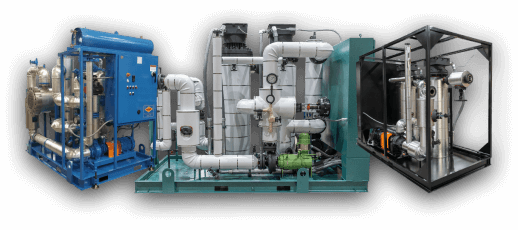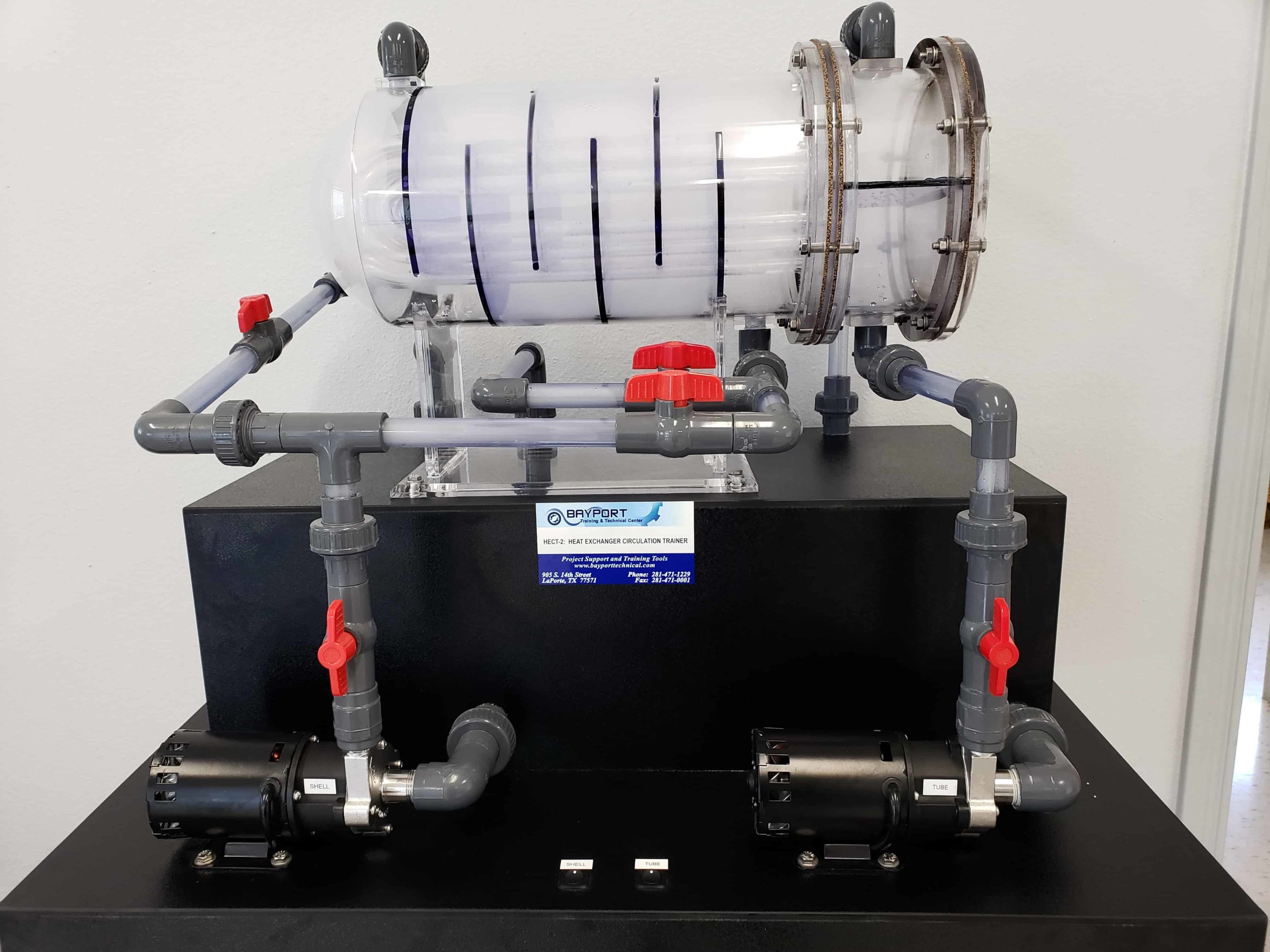A Comprehensive Overview to Choosing the Right Heat Transfer Systems for Your Needs
Picking the suitable Heat transfer system is essential for functional performance. Numerous systems cater to various requirements, affected by variables such as temperature level variety and fluid type. Understanding the principles behind Heat transfer, such as radiation, transmission, and convection, is important. In addition, evaluating energy resources and maintenance practices can influence long-term efficiency. A closer exam of these considerations exposes how to customize a system to certain requirements. What should one prioritize in this complicated decision-making procedure?
Understanding Heat Transfer: Trick Concepts and Concepts
Although Heat transfer might look like a simple idea, it encompasses a variety of principles that are basic for efficient system style. Comprehending these principles is vital for developers and designers who intend to optimize thermal performance in different applications. Transmission, as an example, entails the transfer of Heat via strong materials, while convection refers to the activity of Heat within fluids. Radiation, another vital principle, explains how Heat can be transferred with electromagnetic waves. Each of these mechanisms plays an essential duty in figuring out how power relocates within a system. By extensively grasping these principles, professionals can make informed decisions, making sure that Heat transfer systems run successfully and meet the specific needs of their applications
Sorts Of Heat Transfer Systems: A Summary
Understanding the principles of Heat transfer prepares for discovering the numerous sorts of Heat transfer systems offered. Heat transfer systems can be categorized primarily into three types: conduction, convection, and radiation. Transmission entails Heat transfer through solid materials, relying upon direct contact in between fragments. Convection, on the other hand, takes place in fluids (fluids and gases) where the movement of the fluid itself facilitates Heat transfer. Radiation includes the transfer of Heat via electromagnetic waves and does not call for a tool, permitting it to happen in a vacuum cleaner. Each kind of system has distinctive characteristics and applications, making it essential for people and companies to meticulously evaluate their certain demands when choosing the most ideal Heat transfer service.
Applications of Heat Transfer Equipments in Different Industries
Heat transfer systems play a crucial role throughout various markets, affecting performance and item top quality. In industrial manufacturing processes, they promote specific temperature level control, while in food and drink processing, they ensure security and preservation. Furthermore, a/c and environment control systems rely heavily on efficient Heat transfer to maintain comfy environments.
Industrial Production Processes

Numerous industrial production processes rely heavily on effective Heat transfer systems to optimize efficiency and improve product quality. In markets such as metalworking, Heat exchangers play a crucial function in preserving optimal temperature levels during welding, spreading, and forging. These systems ensure uniform Heat distribution, which is vital for attaining preferred product residential or commercial properties. In the chemical production sector, Heat transfer systems promote exact temperature control during reactions, influencing yield and safety. Additionally, in fabric manufacturing, efficient Heat management is necessary for coloring and completing processes, affecting shade consistency and material top quality. By selecting ideal Heat transfer modern technologies, manufacturers can boost energy effectiveness and minimize operational prices, inevitably causing a much more affordable and sustainable manufacturing atmosphere.
Food and Drink Handling
Effective Heat transfer systems are just as important in the food and beverage processing market, where maintaining suitable temperature levels is vital for food safety and security and quality. These systems play a necessary duty in procedures such as pasteurization, sterilization, and food preparation, making certain that products are risk-free for intake and maintain their nutritional value. Heat exchangers, for circumstances, successfully move Heat between liquids, enhancing power usage while minimizing temperature changes. In addition, refrigeration systems are basic for preserving disposable things and prolonging life span. The selection of Heat transfer modern technology straight impacts functional efficiency and product honesty, making it essential for food and beverage manufacturers to choose the suitable systems tailored to their specific processing needs. This mindful option ultimately adds to customer contentment and food safety and security.

HVAC and Environment Control
While several markets rely upon Heat transfer systems for effectiveness, A/C (Home Heating, Air Flow, and Cooling) plays a vital role in maintaining indoor climate control across different setups. These systems make use of Heat transfer principles to manage temperature level, air, and moisture top quality, making sure convenience and safety in residential, business, and industrial settings. Correctly made HVAC systems boost power efficiency, decrease functional prices, and lessen ecological effect. In commercial buildings, for instance, reliable climate control contributes to staff member efficiency and customer contentment. In commercial applications, heating and cooling systems help keep perfect conditions for equipment operation and product preservation. Selecting the right Heat transfer system is important for meeting specific climate control needs and accomplishing general system performance.
Examining Power Sources for Heat Transfer Equipments
In assessing energy resources for Heat transfer systems, a contrast of sustainable energy options and nonrenewable fuel source factors to consider is essential. Sustainable resources, such as solar and wind, deal lasting alternatives that can reduce ecological influence. Conversely, nonrenewable fuel sources remain common as a result of their well-known framework and energy density, prompting a cautious evaluation of both choices.
Renewable Power Options

Fossil Fuel Factors To Consider
Reviewing nonrenewable fuel source considerations official website is vital for the effectiveness and sustainability of Heat transfer systems. Nonrenewable fuel sources, such as gas, oil, and coal, are typical power sources that offer significant Heat result, making them popular selections for domestic and industrial applications. Their environmental impact, consisting of greenhouse gas exhausts and resource exhaustion, elevates problems. When selecting a warm transfer system, it is crucial to assess the schedule, price, and regulatory factors associated with these gas. Additionally, the performance of fossil fuel systems should be considered, as higher efficiency can alleviate some environmental drawbacks. Inevitably, a well balanced strategy considering performance and sustainability can guide decision-makers towards one of the most appropriate Heat transfer service for their details needs.
Aspects to Take Into Consideration When Choosing a Warmth Transfer System
Choosing an ideal Heat transfer system calls for cautious consideration of various factors that can considerably influence efficiency and performance. One essential element is the operating temperature range, which determines the products and style appropriate for the application. Additionally, the kind of fluid made use of in the system-- whether gas or fluid-- impacts Heat transfer efficiency and compatibility. The system's size and ability have to align with the specific requirements of the operation to prevent inefficiencies. Energy resource schedule is additionally crucial, affecting operating costs and sustainability. The installation environment, including room restraints and accessibility for maintenance, plays a significant function in system option. Regulative compliance and safety and security requirements need to be considered to assure the system fulfills all lawful demands.
Maintenance and Performance Optimization for Heat Transfer Systems
Keeping Heat transfer systems is necessary for Read Full Report guaranteeing optimal efficiency and durability. Regular maintenance tasks, such as cleaning up Heat exchangers and checking insulation, help prevent performance losses as a result of fouling and thermal connecting. In addition, monitoring system criteria, consisting of stress and temperature, enables very early detection of abnormalities, minimizing downtime and costly repairs. Applying a precautionary upkeep timetable can maximize performance and prolong the lifespan of elements. Moreover, upgrading to advanced control systems can boost functional effectiveness by changing to differing lots and problems. By focusing on maintenance and performance optimization, operators can accomplish reduced power intake, reduced functional prices, and boosted overall system integrity, ultimately leading to much better resource use and a more lasting procedure.
Future Fads in Heat Transfer Technologies
As markets significantly prioritize sustainability and energy performance, future fads in Heat transfer technologies are set to undertake significant transformations. Advancements such as advanced materials, consisting of carbon nanotubes and nanofluids, guarantee improved thermal conductivity and efficiency. In addition, the combination of renewable resource sources into Heat transfer systems is getting energy, advertising environmentally friendly remedies. Smart technologies, consisting of IoT sensors, are anticipated to reinvent surveillance and control, making it possible for real-time data evaluation for maximized performance. Furthermore, the growth of modular and portable systems will help with simpler setup and upkeep, dealing with diverse applications. These advancements indicate a shift in the direction of more sustainable, reliable, and adaptable Heat transfer remedies, straightening with worldwide energy goals and environmental requirements.
Regularly Asked Concerns
What Are the Environmental Influences of Heat Transfer Equipments?
The environmental influences of Heat transfer systems can consist of greenhouse gas discharges, power usage, and potential thermal pollution. Furthermore, improper disposal of inadequacies and materials can add to source exhaustion and environment disturbance.
How Do I Calculate the Cost-Effectiveness of a Heat Transfer System?
To compute the cost-effectiveness of a heat transfer system, one must assess initial prices, functional expenditures, upkeep demands, and energy effectiveness, contrasting these factors against the expected life expectancy and efficiency of the system.
Can Heat Transfer Systems Be Utilized in Residential Setups?
Heat transfer systems can certainly be used in household settings. They give reliable home heating and cooling remedies, making homes much more comfy while possibly lowering energy costs. Their flexibility enables various applications in domestic atmospheres.
What Safety And Security Rules Put On Heat Transfer Equipments?
Security laws for Heat transfer systems typically consist of guidelines on procedure, setup, and upkeep. Compliance with regional building regulations, manufacturer specifications, and industry standards is vital to ensure reliable and risk-free system efficiency in different applications.
How Do Various Products Affect Heat Transfer Effectiveness?

Transmission, for circumstances, includes the transfer of Heat through solid products, while convection refers to the activity of Heat within liquids. Recognizing the concepts of Heat transfer lays the foundation for checking out the various kinds of Heat transfer systems readily available. Heat exchangers, for circumstances, efficiently move Heat in between fluids, optimizing energy usage while lessening temperature level fluctuations. In reviewing energy resources for Heat transfer systems, a contrast of sustainable power options and fossil fuel factors to consider is vital. Steels, such as copper and light weight their explanation aluminum, conduct Heat successfully, whereas insulators like rubber and glass slow down Heat circulation.